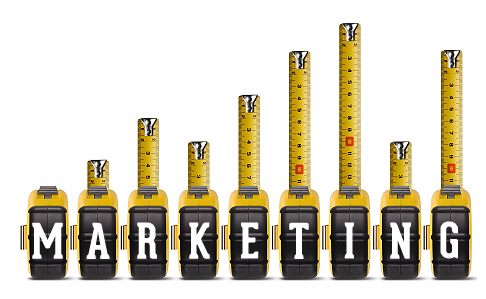 How do you know when you are being successful in marketing? Is
it when you have exposed a certain number of people with your marketing
message? Is it when you have crossed a threshold in website activity, social
media engagement, or your post has gone viral? What is the measuring stick you
use to define marketing success?
How do you know when you are being successful in marketing? Is
it when you have exposed a certain number of people with your marketing
message? Is it when you have crossed a threshold in website activity, social
media engagement, or your post has gone viral? What is the measuring stick you
use to define marketing success?
The ultimate goal in marketing is to meet sales projections.
The problem is, in many businesses, there is a lot of ground to cover between
the point where a prospective customer first hears about your brand and when
they actually make the purchase. Marketing makes incremental steps along the
way, depending upon where the prospect is in their decision-making process. For
instance, are they feeling the need to buy now or later? Are they just shopping
around or are they ready to make the purchase? Do they have enough information
to make the purchase or do they still have unanswered questions?
One method we have used to measure success happens in desired
actions and transitioning prospects from one phase of marketing to the next. We
break marketing into a three-phased approach: awareness marketing, first-time
sales, and retention marketing. Within each phase, we set desired actions. For
instance, if we are working on an awareness campaign for our customers, we want
prospects to recognize the brand we are promoting and to understand what it
represents. Let me give you an example. If I see the Carhartt logo, I know that
they are a leader in durable work apparel, particularly for outdoor laborers
such as construction crews, farmers, utility workers, etc. That’s how I
associate their logo. But do I realize they also produce camping and hiking
gear? They sell hiking boots, lightweight rain jackets, coolers and other items
that I did not associate with their brand. An awareness campaign that would
help me associate a wider range of products to a brand would meet the first
measuring stick – I now know they are more than I thought.
However, my awareness has not gotten me any closer to a sale,
has it? This is where transitioning a prospect from one phase of marketing to
the next becomes important – and so does measuring it. How do you go about
that? Your marketing has to make a compelling reason to move beyond knowledge
of your brand to being interested in buying it. That typically includes three
key pieces of marketing. First, tell them why they need it. Make an emotional
connection with them. Most items that are sold either solve a problem for the
customer or make them feel better about themselves. Second, give them a reason
to buy from you now. A discount with a deadline is a good way to spark
interest. Buy one, get one free; buy now, pay later; money-back if you are not
completely satisfied – these are common ways to transition prospects to customers.
Third, tell them how you are better than the competition. Answer common
questions that often arise in comparing brands. Your marketing should be hyping
the best features of your brand. Now, give them an easy action step to show
they are interested.
Moving prospects from one phase of marketing to the next is
a great way to measure the effectiveness of your marketing. If you build in
desired actions and transitions into your marketing plan, you will be able to
better trace the path of your marketing actions to the cash register.